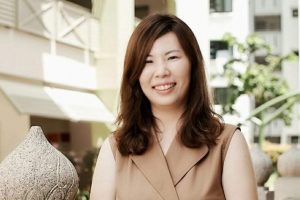Why Singapore’s English Teachers Should Embrace Singlish, Not Fight It
Is it time for Singaporean educators to embrace Singlish as a legitimate learning tool? What the Research […]
Read More
The Eco Stewardship Programme, developed by the Ministry of Education, aims to strengthen current environmental efforts in all schools through the 4Cs of Curriculum, Campus, Culture and Community. Two teachers from Mee Toh School and Tampines Secondary School – both of which are pilot schools in the programme – speak of their experiences in adopting a whole-school approach to environmental education and sustainability efforts.

What has been the biggest challenge in teaching students about environmental sustainability?
One of the biggest challenges in teaching students about environmental sustainability is making the topic engaging and relatable to their daily lives. Environmental sustainability is a complex and sometimes abstract concept, which can be difficult for young students to fully grasp. They may not fully comprehend the urgency of environmental issues, the implications of environmentally unsustainable practices and the longer-term consequences of their actions. Overcoming these challenges requires helping them understand and relate to environmental causes in ways that resonate with them. In Mee Toh School, our school culture for environmental sustainability is built through our school-based environment curriculum, leveraging and engaging the wider community in environment efforts, and focusing our attention in curating an immersive environment within our school campus.
Our school’s Applied Learning Programme is called “Appreciation, Awareness and Action for Eco-Citizens@Mee Toh School”. We also have a programme called “Interdisciplinary Project Work and Values-in-Action (IPW-VIA)” which brings together related environmental topics from various subjects so that our young students can make meaningful connections and extensions to what they learn about the environment. We educate and challenge our students to empathize with real-life environmental issues and design sustainable solutions for the environment. For example, after learning about the challenges posed by urban living to the wildlife population, our students designed fauna hotels. After learning about our existential challenges in ensuring water sufficiency, our students designed ways to recycle water using the scientific principles they have learnt.
How does the infrastructure at your school create an immersive learning environment and help to instil lifelong eco-conscious habits in students?
Eco-stewardship starts from students’ advocacy for the environment. Our school, for example, adopts a whole-of-school and whole-of-community approach to recycling. On Wednesdays, also known as “recycling day”, Environment Ambassadors from each class, together with their form teachers, guide their fellow classmates to sort out their recyclables. Volunteers from the Parent Support Group also help to guide students in these weekly recycling efforts. Through such sustained practices, our students develop eco-conscious habits that they can practise both inside and outside of school, and are empowered to influence others, like their family members, to make simple adjustments for greater eco-friendliness. Environment Ambassadors who are keen to do more for the environment have the opportunity to become Environment Champions who advocate for environmental sustainability at their level and in the school in other ways. Students who are keen to learn more about the environment can also take part in co-curricular activities such as the Nature Lovers Club or the Environmental Science Club.
We are conscious in making environment-friendly decisions, such as the progressive installation of LED lights and the use of more energy-efficient models of electrical appliances, such as inverter air-conditioners and sensors for lights in the toilets. Sensors are installed at taps and water coolers to reduce the wastage of water. In 2021, solar panels were installed on the school’s rooftop – an effort supported by MOE. Green spaces and gardens dot the school landscape while eco-trails have been designed for students to appreciate nature and biodiversity. Our students, too, grow and harvest vegetables and mushrooms within the campus. In our most recent partnership with the Punggol Shore Urban Farm, our students were able to learn more about sustainable farming from the urban community farmers.

How are environmental concepts integrated in the CCE curriculum?
Our goal is for Tampinesians to be “The Passionate Sustainability Stewards (T.P.S.S.)” who are role models for a zero-waste nation. Our CCE environment literacy programme uses the school’s “Authentic, Experiential and Collaborative (ACE)” approach, and features a year-long project thematically aligned to Earth Day. For example, the theme for 2023 was, “Invest in Our Planet, Live Sustainably”.
Each cohort has a focused theme that is coherent with what they study in the academic year.
Our pedagogies allow for student voice and agency through activities such as gamification, learning through the arts, talks by industry experts, partnerships with sustainable organizations and experiential activities. In addition, collaboration with the Music, Art, Literature and Geography units allow creative expressions in addressing environmental challenges.
How does the school nurture a culture of sustainable habits so that those habits extend beyond the classroom into students’ daily lives, and may even influence the community? Perhaps you can highlight some successful projects/programmes that showcase these aspects.
There are plentiful opportunities to promote “green” conversations and practices in our school. We focus on two pillars of the Singapore Green plan: “Sustainable Living” and “City In Nature” as well as the 4Cs of MOE’s Eco-Stewardship Programme as planning parameters.
1. Our Applied Learning Programme (ALP) exemplifies innovative, sustainable practices such as upcycling plastic waste into 3D printer filaments.
2. We organize an annual Green Week with activities such as:
3. Physical spaces become gathering places for experimentation. The Butterfly Lodge allows for nurturing biodiversity and smaller eco-gardens to grow food crops that are donated to seniors in the community. Students are taught how to rear caterpillars and release them as butterflies. They also learn about the challenges of growing vegetables such as chye sim.
4. Green Ambassadors armed with knowledge and advocacy skills contribute both within and beyond school.
5. A “Plant-a-Table” initiative by Mathematics teachers in which teachers role model upcycling possibilities.
6. Believing that teachers are key to culture building, all departments share their annual green initiatives. Every department has their own green initiative that they share during staff contact time. This includes the learning trail to Botanic Gardens by English teachers, as well as reflections on the closed loop ecosystem after an eco-farm tour to a black soldier fly facility organized by the Humanities Department.
7. Partnership with Temasek Polytechnic’s School of Design encourages students to critically address household waste. The theme for the Secondary 1 Values in Action (VIA) programme is “Sustainability”. Students learn about sus-fashion and recycling from Temasek Polytechnic lecturers and create their own products.
Subscribe to our newsletter to receive the latest information about our articles and events. Email us at sgteach@nie.edu.sg for assistance.
On topics related to teaching and learning, we invite you to contribute articles that focus on the following:
We welcome contributions that explore how educators are shaping the future of learning in a rapidly changing world marked by technological advancements and global challenges.
If you have a classroom or education research story to share, we invite you to send in your contribution articles.
Submit your contribution here:
SingTeach complies with the Personal Data Protection Act 2012 of Singapore
For questions, please contact the editorial team: sgteach@nie.edu.sg
